Soapstone moon dust (lat. Saponaria) is a herbaceous flowering plant from the Clove family. Saponaria is the second name of the plant. From Latin "sapo" is translated as soap.
The root of the plant was used as a substitute for soap, because when shaken in water, saponin is released, which forms a foam. Grows in Eurasia on rocky slopes.
It counts nine species of this plant... It happens wild, often grown as an ornamental species.
Saponaria grows rapidly, reaching a height of one meter. Photos are proof of this. Shade-loving perennial. It can grow up to 8 years without transplanting. It has highly branched pubescent stems. Leaves - elongated with a pointed tip, slightly narrowed towards the base. Blooms from June to September.
Soap varieties
- Splendens - bright pink flowers;
- Compakta is a low-growing variety with compacted bushes;
- Rubra Compakta is a low-growing variety with rich red flowers;
- Bressingham is a slow growing hybrid with huge pink flowers.
Other types
The culture includes other hybrids and saponaria species that are rarely found on the seed market:
- Saponaria Olivana (hybrid Saponaria caespitosa x Saponaria pumilio);
- saponaria yellow;
- saponaria Lemperje;
- soddy soapwort and some others.
Growing and care
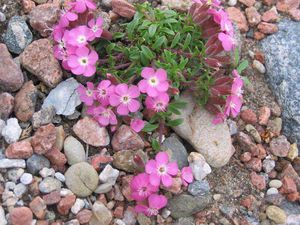 Saponaria prefers air-saturated, loose soils (marginal, calcareous, non-chernozem). An increased content of calcium in the earth is required. Can be added during planting with bone meal. Excessive nitrogen content negatively affects the flowering of the plant.
Saponaria prefers air-saturated, loose soils (marginal, calcareous, non-chernozem). An increased content of calcium in the earth is required. Can be added during planting with bone meal. Excessive nitrogen content negatively affects the flowering of the plant.
Watering the soap dish is required in moderation. With stagnant water the roots will rot.
In winter, the plant may freeze out. But in the spring it will germinate again on its own due to the large number of seeds spreading by self-sowing.
Care is required in the form of regular weeding. After flowering, the saponaria must be cut by a third to shape.
The soapwort is resistant to unfavorable weather. Pests and diseases do not bring much harm to it.
Reproduction of saponaria
The soapwort reproduces in the following ways:
- The soapwort reproduces with the help of seeds, which are sown in the ground in spring or October. Sowing seeds for growing seedlings is best done in March, covering the containers with foil until shoots appear.
- After the appearance of the fourth leaf, the plants are transplanted into pots. During this period, good lighting is required so that the seedlings do not stretch out. If the shoots are long and thin, it means that the plants do not have enough light. Planting in the ground is done in May.
- The division of the soapwort bushes should be carried out in the spring months and immediately transplanted into new holes, adding a little bone meal to each.
- Cuttings from the top. Chi can be separated during spring and summer, but only before flowering begins. The lower leaves are cut from the cuttings and planted in a container with moistened sand.
If there is no desire to receive soapwort seeds, then peduncles should be removed in a timely manner. Self-seeding will therefore be prevented. You can limit the growth of roots underground.
Non-double bushes can be propagated by seeds, and terry bushes can only be propagated vegetatively.
Use in landscape design
The overgrown bushes of the soapwort plant begin to creep along the ground.Creating airy pink carpets. Soapy can be planted in a flower bed among stones. These slides look great among lawns.
Saponaria can be used to create curbs around peony or rose bushes to cover bare ground around tall plants.
The plant planted in flowerpots will hang down, in the form of original cascades. The soapwort is unusually combined with tall ferns and cereal plants. It can be planted under the window of your home to constantly enjoy the fragrant smell of the plant.
The soapstone is used to create the background of landscape compositions. This is clearly seen in the photo.
Plants - partners
There are some plants that need to be planted with soapwort. These include the following:
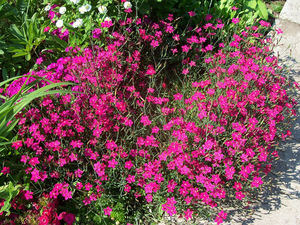 sunflower;
sunflower;- bells;
- splinter;
- sage;
- saxifrage;
- Iberis;
- edelweiss.
Saxifrage, sunflower, sage, bells look good in places where soapwort grows. The photo confirms this. Plants match well in color and height.
An alpine slide will give the space of the site a special charm. Photo of this confirmation.
Useful properties of saponaria
The medicinal part of soapwort is considered to be the root. It contains triterpene saponins. These are soap substances that can be used when washing wool and caring for animals.
The leaves contain ascorbic acid. Soap oil is effective for constipation or as a laxative. It is considered an excellent expectorant, diaphoretic, choleretic and diuretic. It is added to decoctions and infusions.
The plant helps with skin problems:
- eczema;
- dermatitis;
- scabies;
- rash;
- furunculosis.
But folk remedies are used only as an adjunct to traditional therapy and with the permission of a doctor.

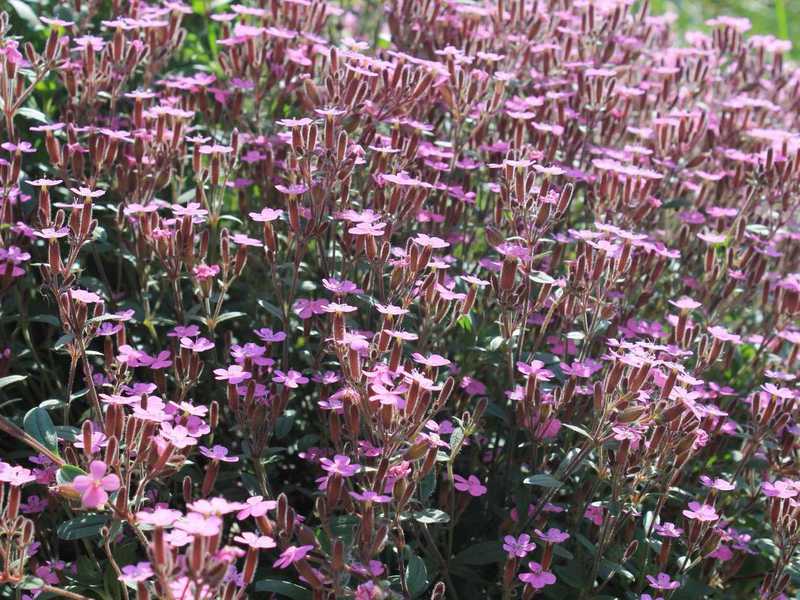
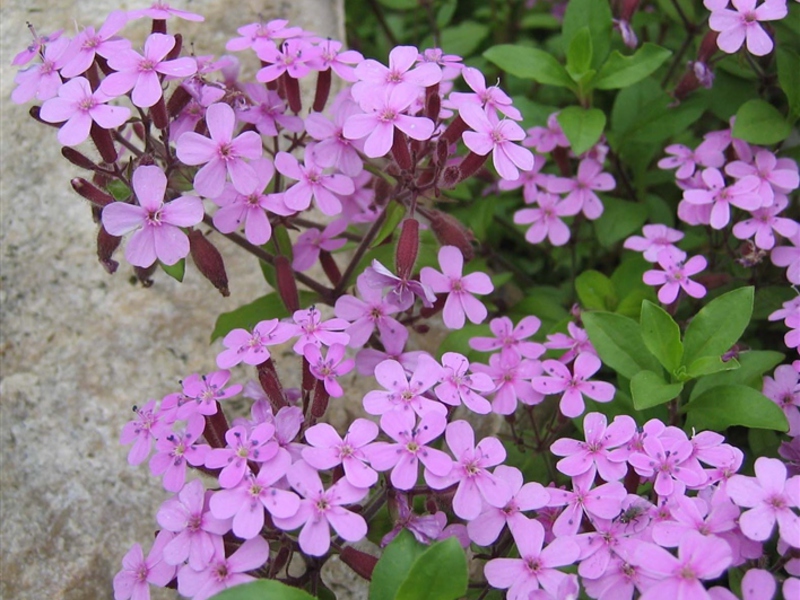
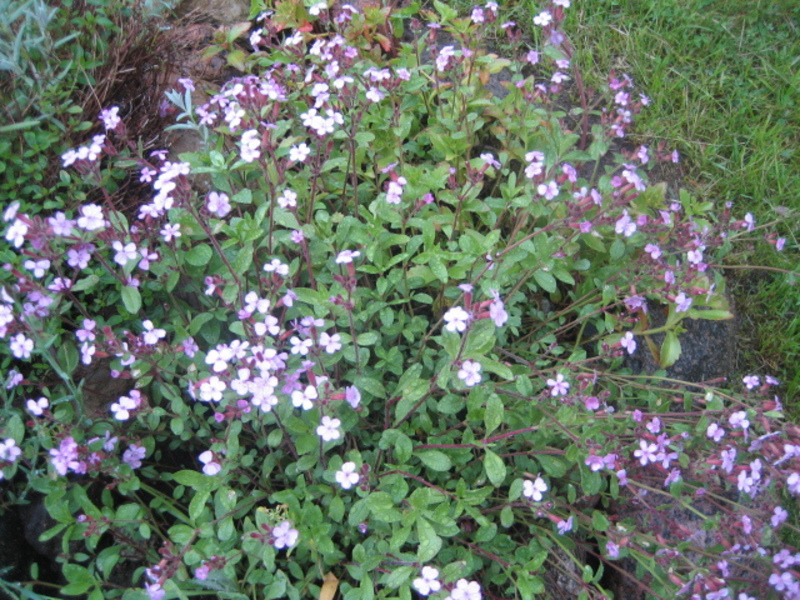
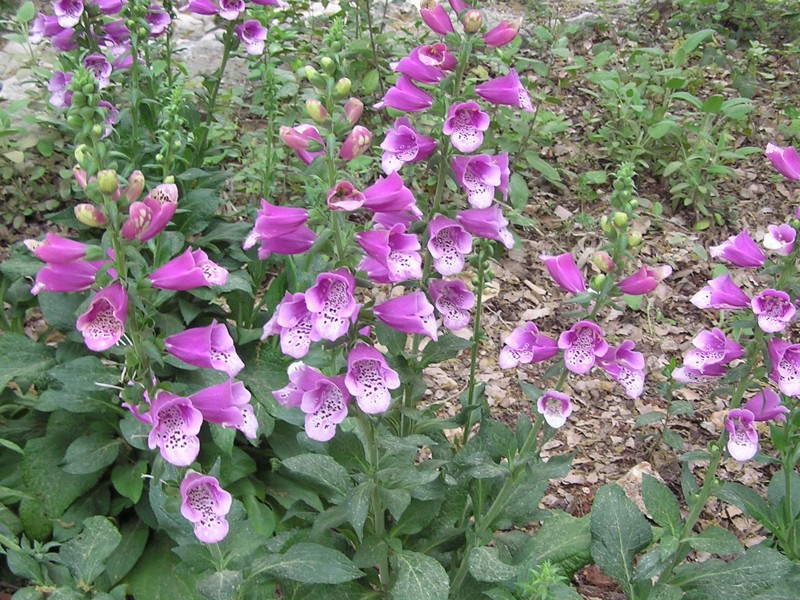
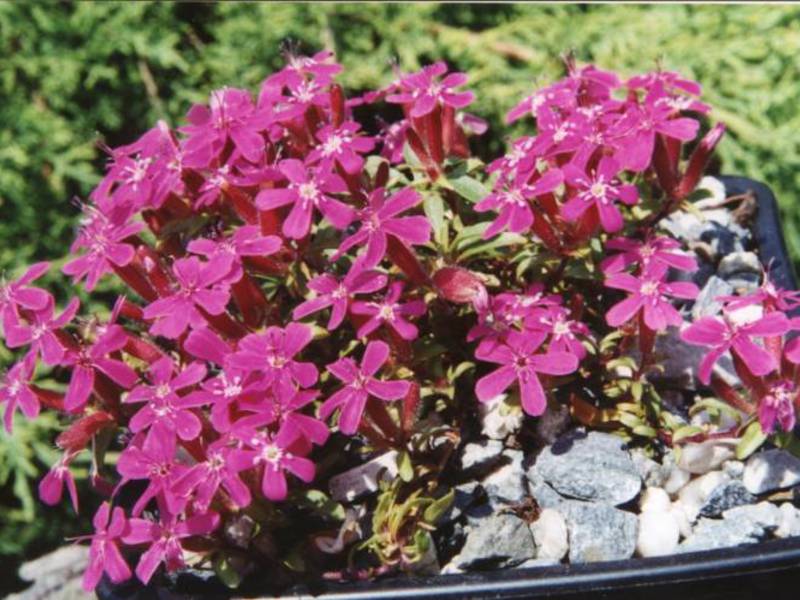
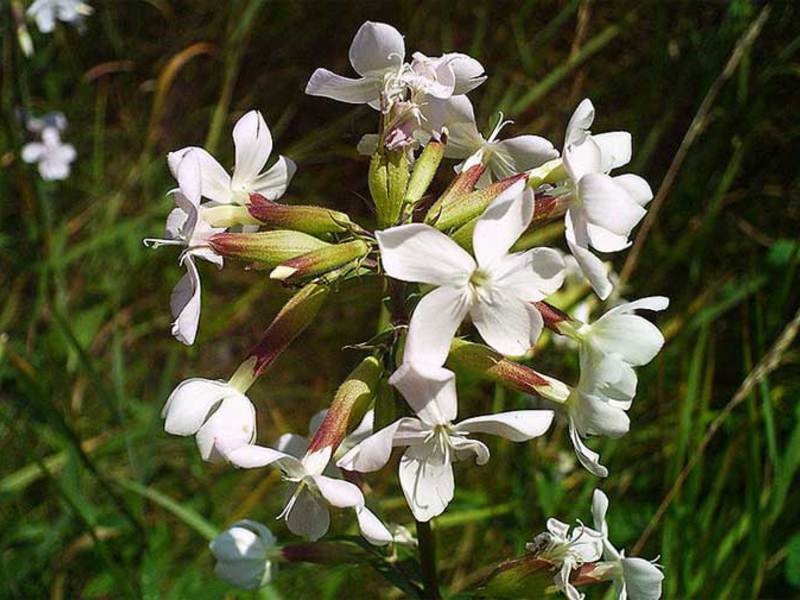
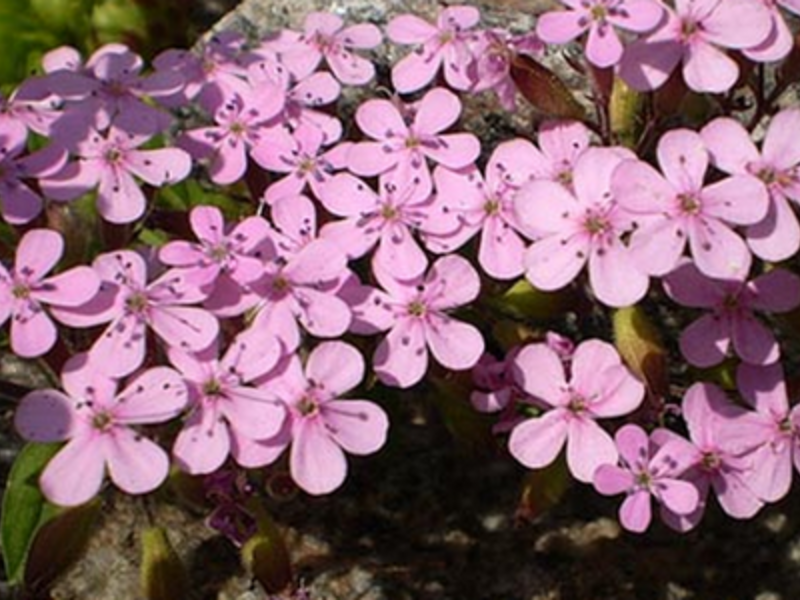

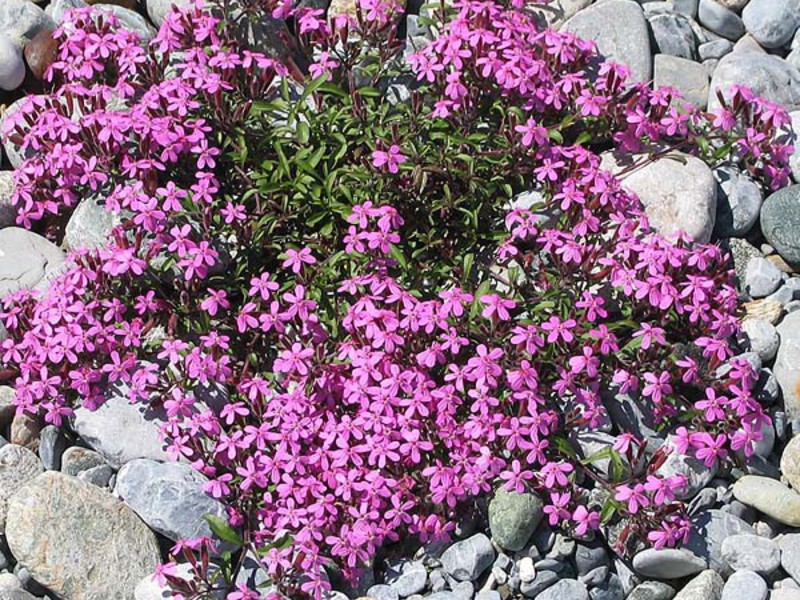
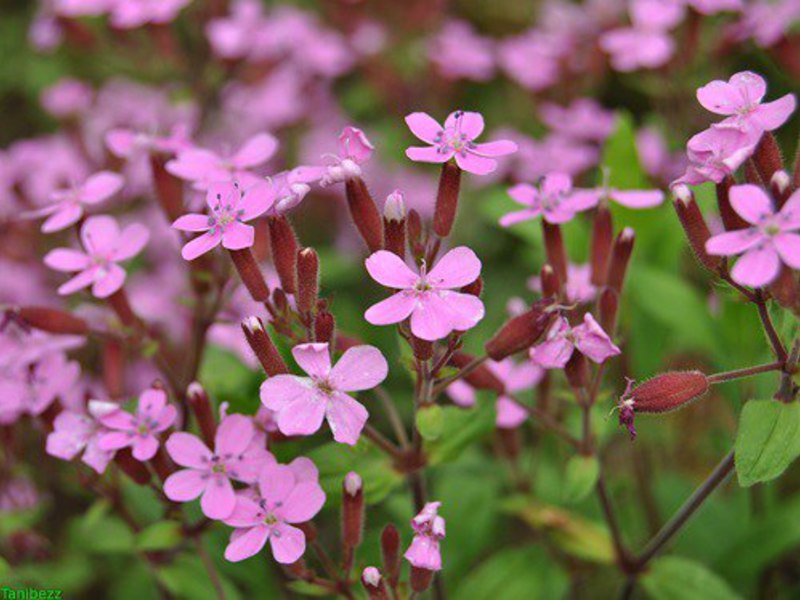
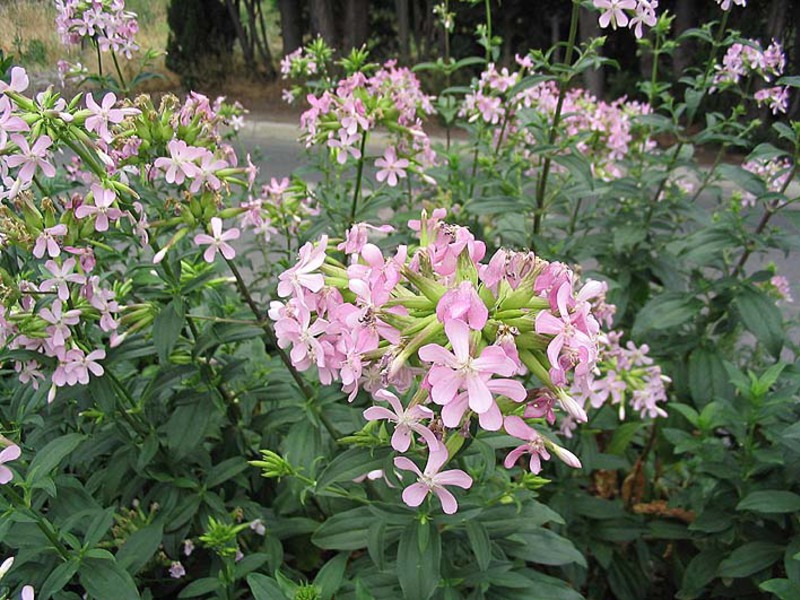


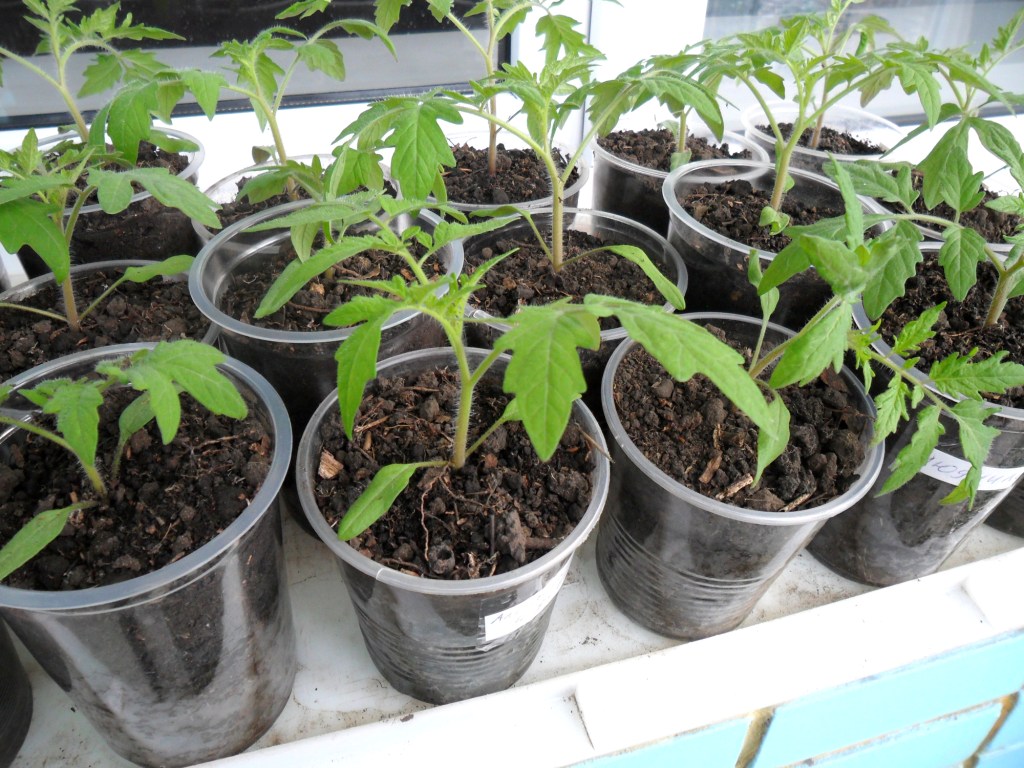
1 comment